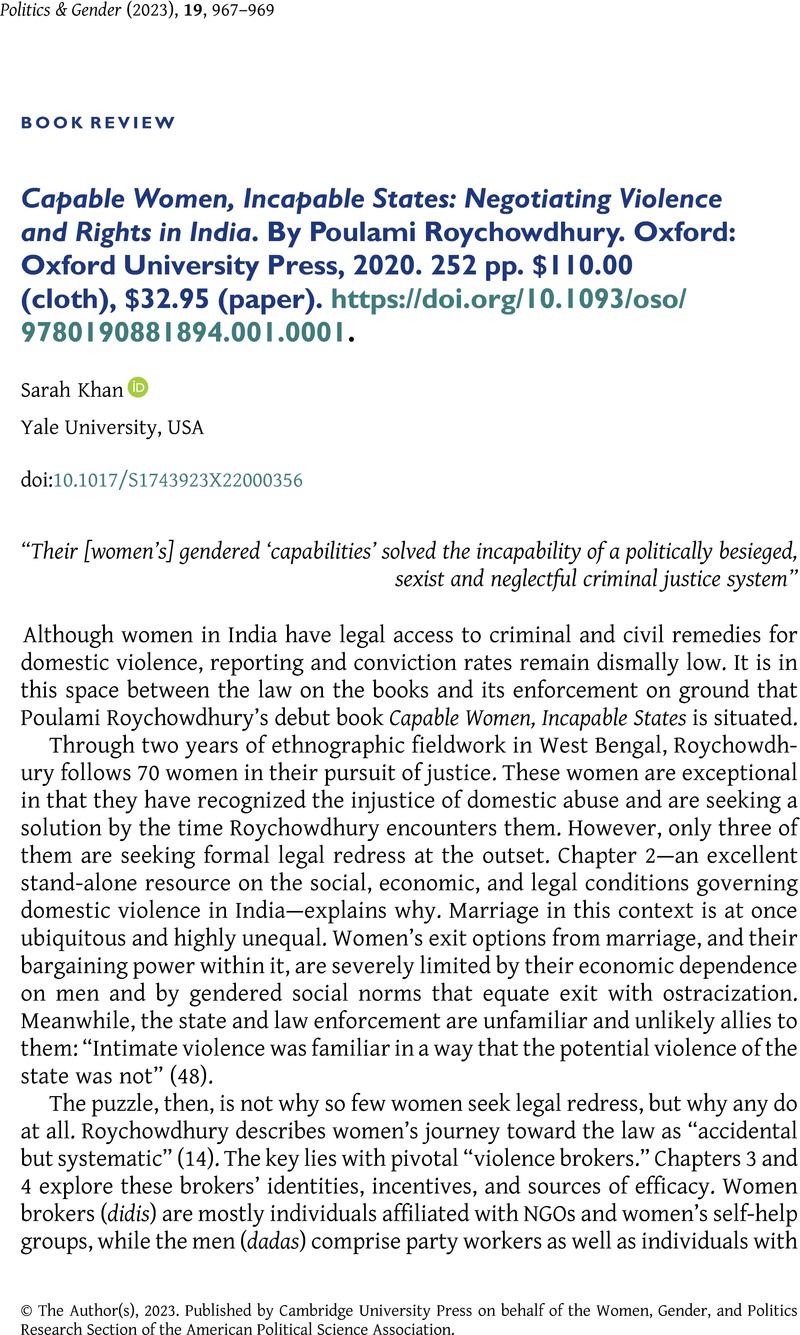No CrossRef data available.
Article contents
Capable Women, Incapable States: Negotiating Violence and Rights in India. By Poulami Roychowdhury. Oxford: Oxford University Press, 2020. 252 pp. $110.00 (cloth), $32.95 (paper). https://doi.org/10.1093/oso/9780190881894.001.0001.
Review products
Capable Women, Incapable States: Negotiating Violence and Rights in India. By Poulami Roychowdhury. Oxford: Oxford University Press, 2020. 252 pp. $110.00 (cloth), $32.95 (paper). https://doi.org/10.1093/oso/9780190881894.001.0001.
Published online by Cambridge University Press: 10 February 2023
Abstract
An abstract is not available for this content so a preview has been provided. Please use the Get access link above for information on how to access this content.

- Type
- Book Review
- Information
- Copyright
- © The Author(s), 2023. Published by Cambridge University Press on behalf of the Women, Gender, and Politics Research Section of the American Political Science Association
References
Dasgupta, Aditya, and Kapur, Devesh. 2020. “The Political Economy of Bureaucratic Overload: Evidence from Rural Development Officials in India.” American Political Science Review 114 (4): 1316–34.10.1017/S0003055420000477CrossRefGoogle Scholar
Deshpande, Ashwini, and Khanna, Shantanu. 2021. “Can Weak Ties Create Social Capital? Evidence from Self-Help Groups in Rural India.” World Development 146: 105534.10.1016/j.worlddev.2021.105534CrossRefGoogle Scholar
Iyer, Lakshmi, Mani, Anandi, Mishra, Prachi, and Topalova, Petia. 2012. “The Power of Political Voice: Women’s Political Representation and Crime in India.” American Economic Journal: Applied Economics 4 (4): 165–93.Google Scholar
Prillaman, Soledad Artiz. 2021. “Strength in Numbers: How Women’s Groups Close India’s Political Gender Gap.” American Journal of Political Science. Published online September 14. https://doi.org/10.1111/ajps.12651.CrossRefGoogle Scholar
Sen, Amartya. 1993. “Capability and Well-Being.” In The Quality of Life, eds. Nussbaum, Martha and Sen, Amartya. Oxford: Clarendon Press, 30–53.CrossRefGoogle Scholar
Weldon, S. Laurel, and Htun, Mala. 2013. “Feminist Mobilisation and Progressive Policy Change: Why Governments Take Action to Combat Violence against Women.” Gender & Development 21 (2): 231–47.CrossRefGoogle Scholar


